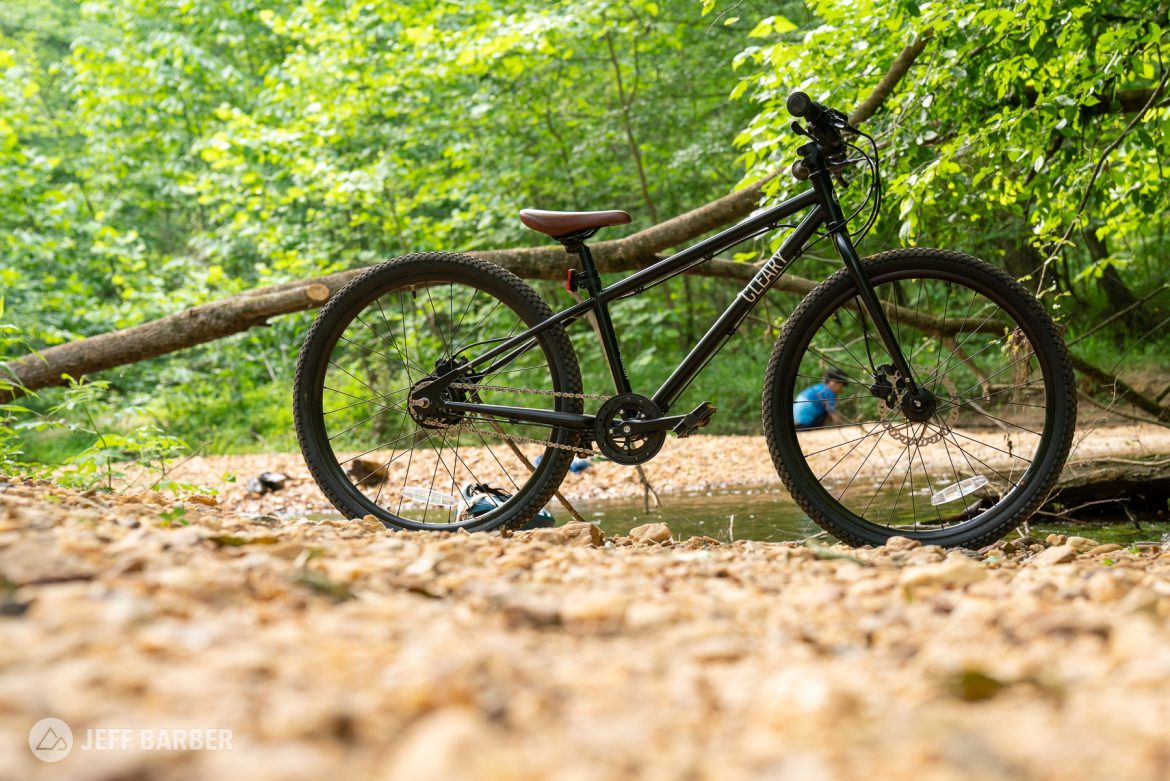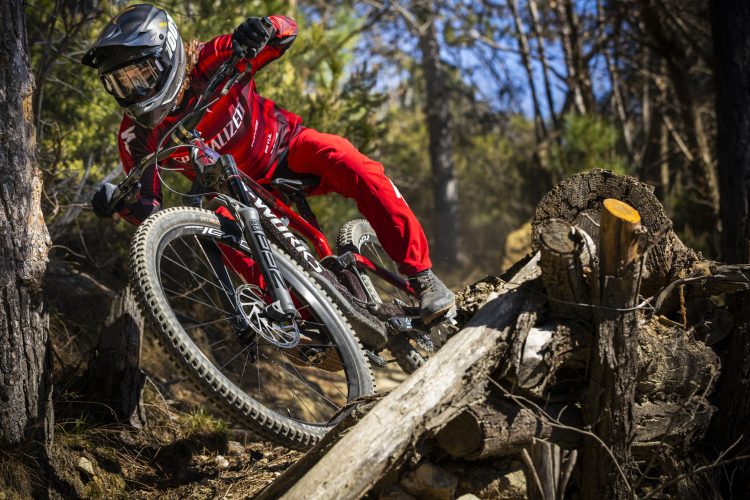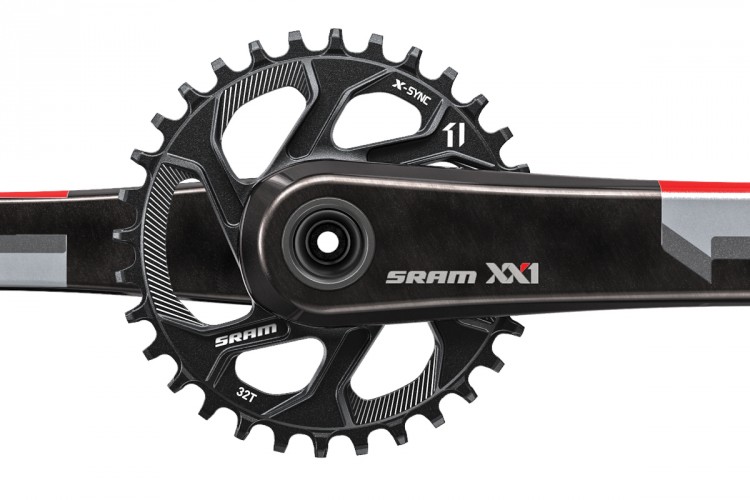
Be sure to read our in for test article about the Cleary Meerkat for full specs and additional photos.
As far as product testers go, it’s hard to beat an eight-year-old. They’re not afraid to push bikes hard in a variety of conditions, and they tend to be brutally honest about what they do and don’t like. Reed has been riding the Cleary Meerkat for a couple of months now and is finally ready to share his review. Since his second grade teacher suggested he needed to practice his least favorite subject — writing — over the summer, I asked Reed to pen an introductory paragraph about the bike.
“I rode it in a lot of places like Blankets Creek and my neighborhood. The bike looks cool and feels comfy. I like that it’s big and it’s easy to shift gears. It rides smoothly and I like the thumb shifters. The two things I don’t like are that it is harder to jump with no suspension fork and the brakes aren’t powerful enough.”
A man of few words, I’ll fill in the details for each of Reed’s points below.

“I rode it in a lot of places like Blankets Creek and my neighborhood”
As I wrote earlier, eight-year-olds probably need a quiver-killing bike more than anyone else. Just look at the photos included in this review. We start off with some corner drifting practice above, followed by intensely-focused XC riding, and then wheel lifts and ramps. And those three photos were all taken on the same day, during the same ride! There’s also paved road, neighborhood riding to be done, and stops at the local creeks to throw rocks. Basically kids like Reed need a commuter / dirt jump / XC / trail bike, which is certainly a tall order for one bike.
Cleary specs the Meerkat with most if not all of these applications in mind, and the tire selection provides a perfect illustration. The tread is fast rolling for rides to friends’ houses, yet the knobs provide enough bite for hitting singletrack in the woods. At 1.9″ wide, the tires are narrow by today’s adult-bike standards, but are well-proportioned for the Meerkat’s 24-inch wheels, both in terms of weight and handling. Sure, designing a bike for such a wide range of uses involves tradeoffs, but the end result doesn’t feel like too much of a compromise.

“The bike looks cool and feels comfy”
As Reed noted, the bike looks cool, and I have to agree. The black paint job, minimal graphics, and brown vegan-leather saddle makes this look like a hip, grown-up bike. Despite having another, slightly more capable bike in the garage at the moment, the Meerkat has been Reed’s go-to this spring in large part due to its aesthetic. The desire to look and feel cool starts early I suppose.
Speaking of good feels, Reed tells me the bike rides comfortably. I was worried the rigid fork would cause some discomfort on the trail, but he didn’t complain during any of our rides. (For the non-parents out there, a lack of complaining during a ride is the equivalent to an adult grinning from ear-to-ear and whooping for joy during a descent.) The saddle seems to be particularly comfortable, as are the grips which most kids will tend to grab without gloves.

“I like that it’s big and it’s easy to shift gears”
I’m not entirely sure what Reed means when he says the bike is “big.” He’s a tall kid — about four and a half feet — and has been riding a bike with 24-inch wheels for more than a year now, possibly two. He’s always looking to move up to a bigger bike for whatever reason, though this one fits him just fine. There’s still room to raise the seat up higher as he grows, and I expect the bike will outlast more than one kid who outgrows the frame.
The Meerket features an internally-geared, five-speed drivetrain which, as I mentioned in earlier coverage, is decidedly low maintenance. What I failed to appreciate is also how much easier an internally-geared drivetrain is to operate for young riders just getting the hang of shifting and gears. Unlike a derailleur-based system, there’s really no need to time shifts with pedal strokes and cadence. Kids can be coasting and shift from gear one to gear five, and as soon as they start pedaling again the bike is ready to go. I noticed Reed shifting more often and more appropriately with the Meerkat compared to his other bike, which makes riding easier and more fun, especially when it comes to riding uphill.
“It rides smoothly and I like the thumb shifters”
I was surprised to hear Reed say the Meerkat rides smoothly compared to his other bike which has a suspension fork. Personally I find a rigid fork to be anything but smooth, however there is something to be said for the light weight of a rigid front end. Especially for a smaller, younger rider, being able to lift the front wheel over small rocks and roots can feel like floating across the trail. The steel frame likely also provides a smooth ride compared to the aluminum bike he’s used to. Like most kids’ bikes, the Meerkat is surprisingly heavy — 28+ pounds — and the upshot is it feels grounded and stable on smooth surfaces.
The thumb shifter gets a thumbs up from Reed. His other bike uses a grip shifter which he doesn’t seem to like very much. I don’t blame him; I don’t get grip shifters either.

“The two things I don’t like are that it is harder to jump with no suspension fork and the brakes aren’t powerful enough”
Whoa, where did that come from!? Reed certainly isn’t on the fast track to Rampage by any means. Maybe he’s picked up on some of the things I’ve said over the years or he’s just trying to impress friends, but there’s likely some truth and insight to what he’s saying as well.
The Cleary Meerkat frame is suspension-corrected meaning it is possible to add a squishy fork for kids who lean more toward off-road riding and jumping. As he mentioned earlier, the rigid fork handles mildly rough trails just fine. However, Reed seems to be missing the ability to push down on the fork when going into a jump and preloading for additional pop. The landings would surely be smoother with some suspension up front. The one thing he doesn’t quite grasp is that a decent suspension fork would add a significant cost to this build, though obviously that’s not his problem.
On our first few test rides the disc brake pads needed to be bedded in, and there was an adjustment period where Reed tweaked his braking style to compensate. Ultimately I think he’s been able to squeeze enough stopping power out of the 160/140mm rotors and Tektro hydraulic calipers, especially for the trails we ride. Since the brakes are hydraulic, it is possible they may need a bleed, which I’m not really stoked to do. I’d prefer mechanical discs from a maintenance perspective, though it’s likely those would offer even less power.
Priced at $625 the Cleary Meerkat seems to deliver a good value as a low-maintenance bike that can be ridden both on- and off-road. More shred-worthy kids’ trail bikes tend to be priced above $1,000, and while department store bikes can be had for close to $100, those don’t tend to be as fun to ride or last very long. The Meerkat offers a nice compromise between the two and should be a good one to hand down among the sibs.
One size, available for purchase at the Cleary Bikes website.





















1 Comments
Jun 28, 2021